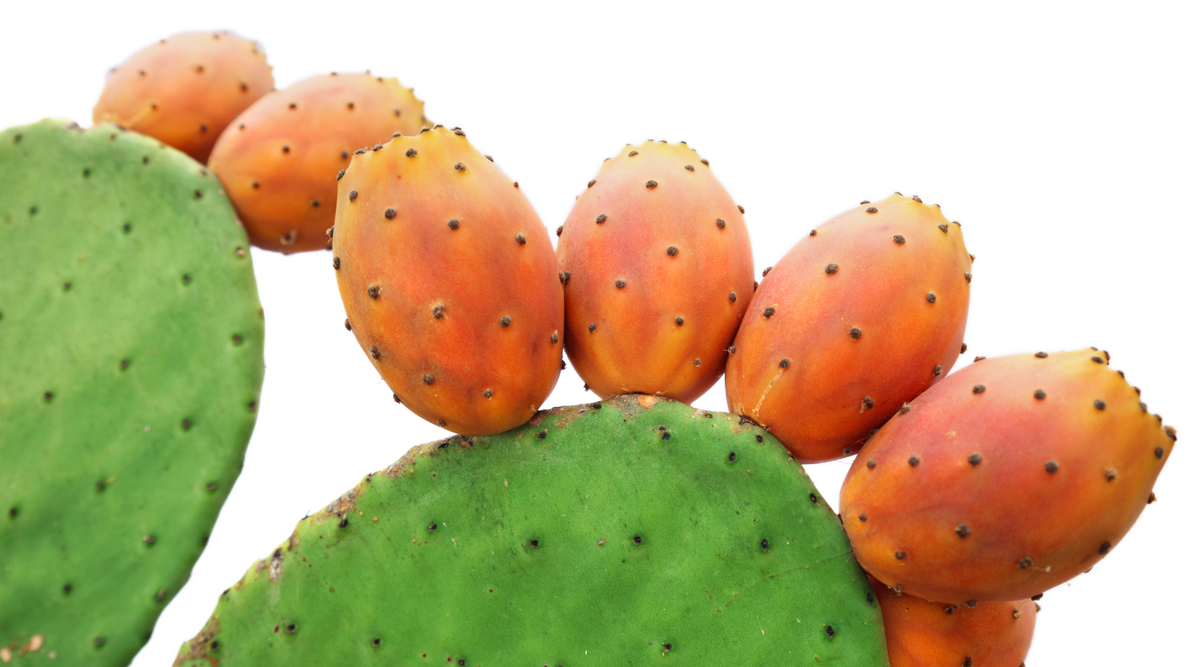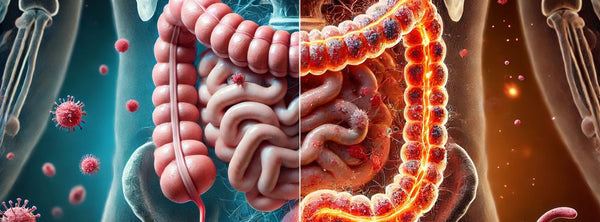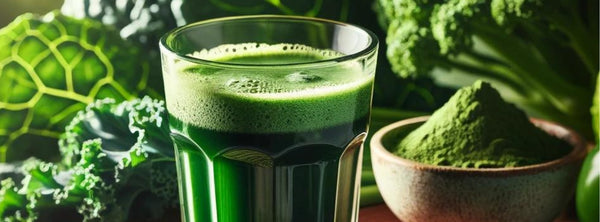
What is Nopal Cactus?
Nopal Cactus, commonly known as prickly pear, is considered a weed in some countries. But in its native homeland of Mexico, the fruit and pads or nopales are used as a stable food source, often eaten raw, or used in stews, soups and salads. It is also used in traditional medicines.
Health Benefits of Nopal Cactus
Scientific studies have shown Nopal Cactus to have potent anti-inflammatory and antioxidant activities, which help reduce intestinal inflammation. In addition, Nopal Cactus has strong anti-microbial properties, especially against Campylobacter species and Vibrio cholera. Both bacterial species are common causes of gastroenteritis and digestive upsets.
A significant benefit of Nopal Cactus is its high content of prebiotic and mucilage fibres. These fibres, once consumed by the beneficial gut bacteria, produce Short-Chain Fatty Acids, which in turn provide healing and nutritional support for the intestinal cells, beneficial bacteria and the microbiome.
Short-Chain Fatty Acids help to heal Leaky Gut Syndrome, reduce intestinal inflammation, nourish the cells that line the colon plus increase the strength and variety of all the essential bacteria residing in the gut. This leads to a more robust immune system, greater waste removal via the bowel, improved digestion, a stronger bacterial defence system and the healing of intestinal permeability. Animal studies further show that obese rats, when fed a high fat and sucrose diet, their health improved after consuming Nopal Cactus. There was an increase in the numbers of beneficial bacteria and a reduction of Dysbiosis and Inflammation.
Nopal Cactus' healing abilities are not just limited to the gut, but also extend to protecting and healing the liver. Elevated hepatic triglycerides are a major underlying cause of Non-Alcoholic Fatty Liver. Studies suggest a 50% reduction in high hepatic triglycerides after 7 weeks of consuming Nopal Cactus.
The amino acid L-Glutamine reduces intestinal inflammation and promotes intestinal enterocyte proliferation and regulates tight gap junction proteins. The accumulative effect of L-Glutamine is that it helps heal intestinal permeability and Leaky Gut Syndrome. Nopal Cactus contains approximately 30% to 36% natural L-Glutamine.
So it's not just a prickly old pear after all!
Nutritional Content Of Nopal Cactus
Thankfully, the US Department of Agriculture provides detailed nutritional content for 100g of raw Nopal Cactus Nopales. See the table below;
| Water | 87.55g | Zinc | 0.12mg |
| Protein | 0.73g | Copper | 0.08mg |
| Carbohydrate | 9.57 | Selenium | 0.6ug |
| Fibre | 3.6g | Vitamin C | 14mg |
| Calcium | 56mg | Thiamin | 0.014mg |
| Iron | 0.3mg | Riboflavin | 0.06mg |
| Magnesium | 85mg | Niacin | 0.46mg |
| Phosphorus | 24mg | Vitamin B-6 | 0.06mg |
| Potassium | 220mg | Folate | 6ug |
| Sodium | 5mg | Beta Carotene | 25ug |
| Vitamin A | 41IU |
Who would have thought the Nopal Cactus could do so much. I just wish it could mow the lawn, do the dishes or complete my tax return as well!
Nopal Cactus is a major medicinal plant, especially for the digestive tract and that's why it's a key ingredient in NatroVital's Intestinal Repair Powder. Intestinal Repair contains 15 key ingredients to help reduce intestinal inflammation, heal intestinal permeability, Leaky Gut Syndrome and increase the strength and numbers of beneficial gut bacteria.
We hope you found this blog 'Who Would Have Thought That Nopal Cactus Would Be So Healthy' of interest. If it did, please leave a comment or share on social media.
Thanks and have a great day!
The information provided in this article "Who Would Have Thought That Nopal Cactus Would Be So Healthy" is of a general nature and intended for educational purposes only. We make no claims to diagnose, treat, prevent, alleviate or cure illnesses or diseases with any information or product stated. With any health issue, we suggest you consult your healthcare professional before undertaking any health treatment.
References:
- El-Mostafa K, El Kharrassi Y, Badreddine A, Andreoletti P, Vamecq J, El Kebbaj MS, Latruffe N, Lizard G, Nasser B, Cherkaoui-Malki M. Nopal cactus (Opuntia ficus-indica) as a source of bioactive compounds for nutrition, health and disease. Molecules. 2014 Sep 17;19(9):14879-901. doi: 10.3390/molecules190914879. PMID: 25232708; PMCID: PMC6270776.
- Sánchez-Tapia M, Aguilar-López M, Pérez-Cruz C, Pichardo-Ontiveros E, Wang M, Donovan SM, Tovar AR, Torres N. Nopal (Opuntia ficus indica) protects from metabolic endotoxemia by modifying gut microbiota in obese rats fed high fat/sucrose diet. Sci Rep. 2017 Jul 5;7(1):4716. doi: 10.1038/s41598-017-05096-4. PMID: 28680065; PMCID: PMC5498631.
- Moran-Ramos S, He X, Chin EL, Tovar AR, Torres N, Slupsky CM, Raybould HE. Nopal feeding reduces adiposity, intestinal inflammation and shifts the cecal microbiota and metabolism in high-fat fed rats. PLoS One. 2017 Feb 14;12(2):e0171672. doi: 10.1371/journal.pone.0171672. PMID: 28196086; PMCID: PMC5308786.



